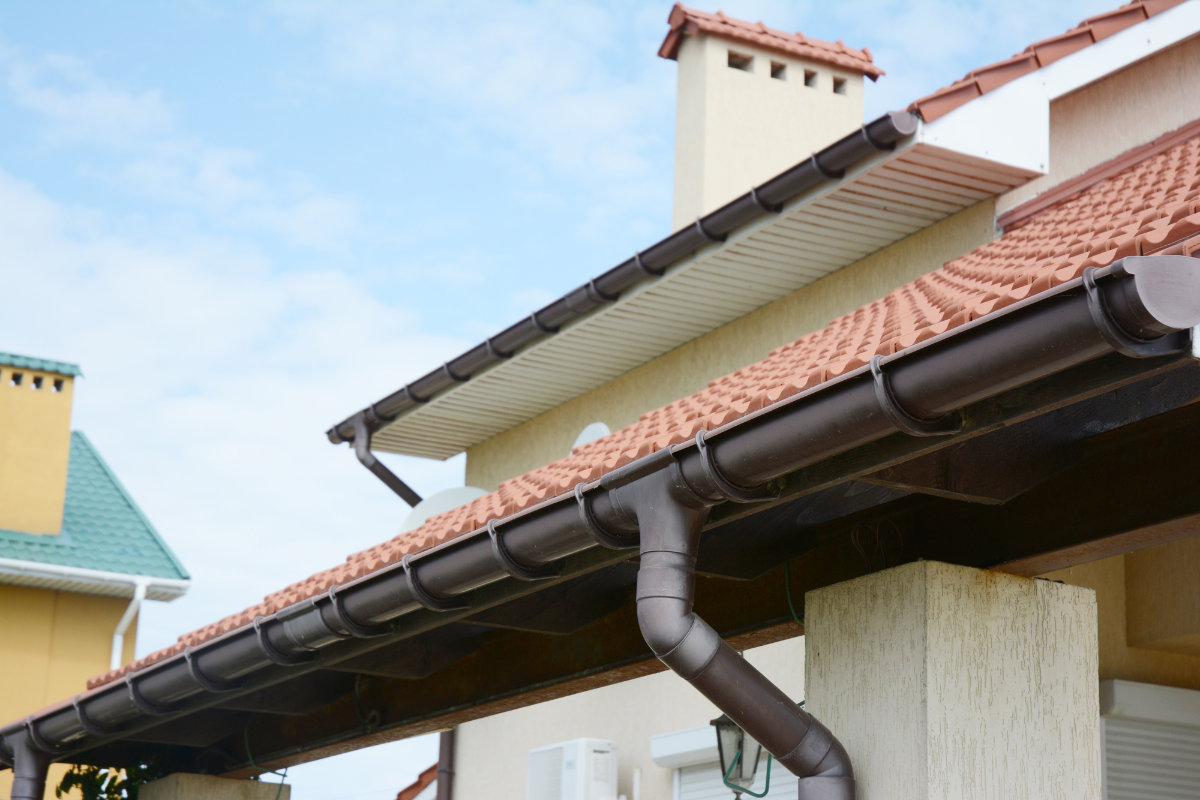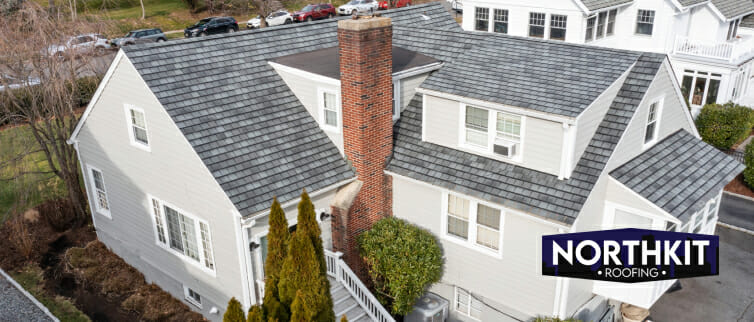Homeowners are now more involved in the roofing process than ever before. This means that it’s helpful for all those involved to know as much as they can about the project. When constructing a new roof, knowing the parts that make up the roofing system is crucial. A roofing system is more than the first line of defense for your home, it also plays a role in improving curb appeal, so ensuring that all the roofing components are in good condition is crucial.
In this blog post, we’re going to discuss the eaves of the roof, explaining what they are, the types that you can find on a home, their importance in a roofing system, and more, so that you can get a better understanding of your roof’s anatomy.
What Is A Roof Eave?
Roof eaves, for those unfamiliar with the term, refer to the lower edges of a roof that project beyond the exterior walls of a building. It’s also called the overhand, and simply put, this is the part of the roof that extends beyond your home.
Without a doubt, the roof eaves act as a strong architectural element. But it’s more than that. This simple feature provides more than just an aesthetic purpose. The primary function of the eaves is to aid in preserving the overall structure of your roof, as well as your home.
These overhanging edges can significantly decrease maintenance costs while enhancing your dwelling’s durability. We will talk about this in more detail later on.
The Importance Of Roof Eaves
When you install a new roof, creating roof eaves is not just an optional addition but an essential component of any reliable roofing system. The roof overhang also works to support other crucial components such as your gutters and the soffits and fascia boards.
The eaves of the roof also give you space to install other components such as lighting and decoratives that can improve curb appeal. Plus, they provide practical insulation against excessive sunlight by implicitly extending over the windows, providing shade and thereby curtailing energy costs during hot sunny days.
Now that we’ve established what roof eaves are, and their importance, let’s delve into further details about the various types you may find on a home and their intrinsic characteristics.

The Primary Functions Of Roof Eaves
Roof eaves, covered by the fascia on the front and the soffit on the underside, play multiple critical roles. When carefully designed and properly maintained, they are more than just aesthetic elements on your home or business. They provide these three important functions.
1. Protection Against Water Damage:
Primarily, roof eaves guard the integrity of the walls and roofing structure from water damage by directing rainwater away from your building.
Your gutters are attached to the eaves along the fascia board. These help to shield your walls from moisture damage, which is essential considering how many water-related issues can cause havoc on buildings. It not only helps to protect against water and moisture damage, but it also helps to prevent mold growth and wood rot, even averting possible structural collapse caused by excess moisture.
2. Shielding Against Sunlight And Weather Conditions:
Since the eaves extend past the walls of your building you provide shade and coverage for weather conditions such as wind-driven rain and hail. They also protect the windows and siding from UV exposure, preventing damage and high energy bills.
3. Energy Efficiency And Ventilation Support:
One of the most crucial tasks of roof eaves is to promote energy efficiency in your home. You might be wondering how this is possible, but it is with the addition of soffit vents on the underside of your eaves.
The soffit vents improve air circulation by bringing in cool air that circulates and pushes hot air out of exhaust vents in the attic. This reduces the chances of moisture-related issues and prevents excessive heat buildup during hot spells. As a result, buildings can maintain a comfortable temperature without relying too much on energy-consuming appliances.
Types Of Roof Eaves
Now that we know about what a roof eave is and how it can play an important role in the overall functioning of your home, it’s time to learn about the various types of roof eaves that you will come to find. There are three major categories: open, closed, and boxed.
Open Eaves
Open eaves showcase structural details as they leave beams or rafters visibly exposed on the underside.
Being generally more straightforward in design, open eaves craft an authentic architectural image. They allow for better under-eave ventilation which helps in tackling moisture problems, effectively providing a cool climate inside the building, which is comfortable in the summer. Their practical style appeals to contemporary tastes, adding artistic flair to any structure.
You’ll frequently see open eaves on structures with rustic charm such as mountain cabins, and country houses. You can also see open eaves on residential homes with a minimalist design.
Closed Eaves
In this construction, the rafters are not visible and are covered, giving your exterior a sleek finish. Energy efficiency is another trait worth mentioning here. Closed eave structures reduce wind blow-through. They tend to hold the heat better and can save you money on utility bills.
Given their neat lines and modern look, you’ll mainly witness closed eave installations in urban settings. They complement compact housing units where worries related to potential weather damage prevail.
Boxed Eaves
Similar to closed eaves, box eaves envelop the existing rafter tails within a box-like form with additional decorative molding. Advantages included better protection against elemental factors and preventing pests.
Boxed eaves yield the supreme blend of style and ruggedness that suits larger buildings, therefore they’re a common choice for commercial buildings or residences looking to mix modernity with a classic architectural touch.
Tips For Maintaining Roof Eaves
In every home, the need for ongoing maintenance is a crucial aspect that can’t be overlooked. The longevity and robustness of your roofing system, particularly your eaves, rests heavily on how consistently you practice maintenance.
Regular Inspections
Paying close attention to your roofing system is an ideal first step in maintaining roof eaves. Clear your schedule periodically for roof inspections as routine inspections can help detect minor forms of damage before they escalate into major ones.
It is always best to seek assistance from a professional roof inspector who has the right knowledge and tools to inspect different roofing systems.
Clearing Debris
Next up on your maintenance checklist should be clearing debris such as leaves, twigs, or even nests built by birds and insects. Make sure that you clean off any form of clutter regularly, as this excess weight may lead to sagging roof eaves over time.
What Is The Average Lifespan Of Roof Eaves?
Roof eaves typically last as long as the roofing system itself, typically around 15 to 25 years depending largely on material quality, climate exposure, installation technique, along with the amount of maintenance practiced over time. However, commencing regular inspections from day one enhances their life expectancy dramatically. It allows homeowners to mitigate potential threats quickly, which is an integral factor for determining overall durability.
Contact Us For Your Residential Roofing Needs!
When it comes to the proper installation of roof eaves and the rest of your roofing system, you need a contractor you can trust. At Northkit Roofing, we are professional roofing contractors who offer the best residential roofing services in Montclair, and the surrounding areas of New Jersey. Contact us today at (973) 396-7416 to learn more about how we can help you!


